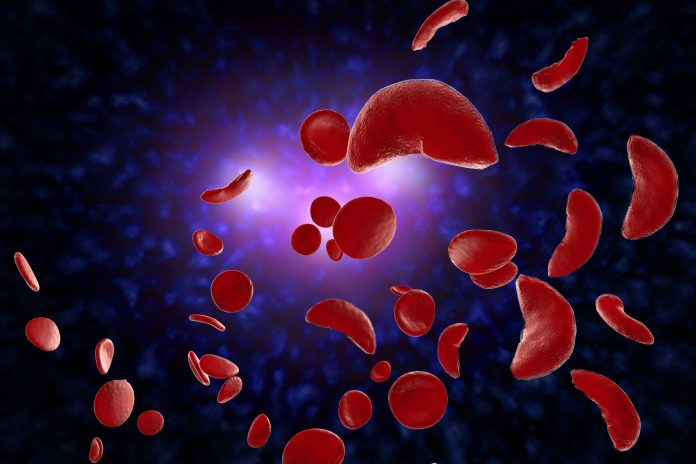
Sickle cell disease (SCD) and beta thalassemia could be cured by gene therapy, but which approach would be most effective and safest? A team from St. Jude Children’s Research Hospital and the Broad Institute of MIT and Harvard may have the answer.
They compared five gene editing strategies in CD34+ hematopoietic stem and progenitor cells in lab studies, using either Cas9 nuclease or adenine base editors. The most potent modification was adenine base editor generation of γ-globin –175A>G. The study was published this week in Nature Genetics. The senior author is Jonathan Yen, PhD, St. Jude Therapeutic Genome Engineering group director.
“Ultimately, we showed that not all genetic approaches are equal,” said Yen. “Base editors may be able to create more potent and precise edits than other technologies. But we must do more safety testing and optimization.”
Base editing is considered best suited for making single-nucleotide changes to a DNA sequence, but it can only make one change at a time. Still, there are many diseases that involve point mutations. CRISPR/Cas9, meanwhile, can remove or insert pieces of DNA into the target strand, but it typically introduces single base changes at rates of only 0.1% to 5%.
“The gamma-globin [fetal hemoglobin] gene is a good target for base editing because there are very precise mutations that can reactivate its expression to induce expression after birth, which may provide a powerful ‘one-size-fits-all’ treatment for all mutations that cause SCD and beta-thalassemia,” said co-corresponding author Mitchell Weiss, MD, PhD, St. Jude Department of Hematology chair.
SCD and beta thalassemia are life-threatening anemias affecting millions of people. They are caused by mutations in the β-globin (HBB) gene, which encodes an adult version of the oxygen-carrying molecule hemoglobin. Symptoms of these disorders arise after birth, when there is a switch in expression from fetal γ-globin genes (HBG1/HBG2) to mutated HBB.
Earlier work suggests restoring gene expression of an alternative hemoglobin subunit active in the developing fetus can have therapeutic benefit in SCD and beta thalassemia patients.
This team compared Cas9 disruption of the +58 BCL11A erythroid enhancer or of the γ-globin promoter BCL11A binding motif, or adenine base editor installation of three individual γ-globin promoter HPFH variants located –198, –175 and –113 bp upstream of the transcriptional start site. Compared with Cas9-generated indels, base editing approaches were more potent, raising the expression of fetal hemoglobin to higher, more stable, and more uniform levels than using CRISPR/Cas9 nuclease.
The team used a base editor to create a new TAL1 transcription factor binding site, which they say causes particularly strong induction of fetal hemoglobin.
“Creating a new transcription factor binding site requires a precise base pair change— something that can’t be done using CRISPR-Cas9 without generating unwanted byproducts and other potential consequences from double-stranded breaks,” Yen said.
The study showed that using base editing at the most potent site in the gamma-globin promoter achieved 2- to 4-fold greater HbF levels than Cas9 editing. The team further demonstrated that these base edits could be retained in engrafting blood stem cells from healthy donors and SCD patients by putting them into immunocompromised mice.
When compared for safety, base editing caused fewer genotoxic events, such as p53 activation and large deletions. Base editing was also much more consistent in its edits and products. In contrast to conventional Cas9, which generates uncontrolled mixtures of insertion and deletion mutations, the team says, base editing generates precise nucleotide changes with few undesired byproducts.















